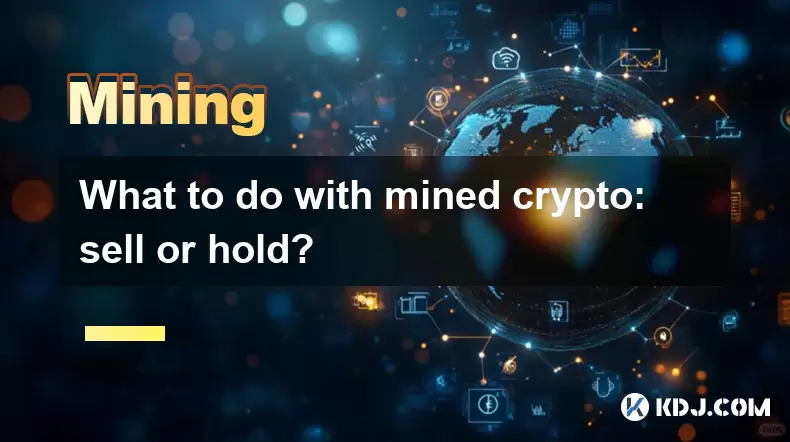-
 Bitcoin
Bitcoin $120400
1.77% -
 Ethereum
Ethereum $3615
7.90% -
 XRP
XRP $3.580
17.84% -
 Tether USDt
Tether USDt $1.001
0.06% -
 BNB
BNB $729.4
1.25% -
 Solana
Solana $179.9
5.04% -
 USDC
USDC $0.0000
0.01% -
 Dogecoin
Dogecoin $0.2311
8.22% -
 TRON
TRON $0.3226
4.04% -
 Cardano
Cardano $0.8490
12.85% -
 Hyperliquid
Hyperliquid $46.45
0.72% -
 Stellar
Stellar $0.4913
8.54% -
 Sui
Sui $4.027
2.00% -
 Chainlink
Chainlink $18.51
11.67% -
 Hedera
Hedera $0.2818
21.51% -
 Avalanche
Avalanche $24.03
7.40% -
 Bitcoin Cash
Bitcoin Cash $508.5
2.90% -
 Shiba Inu
Shiba Inu $0.00001496
3.24% -
 UNUS SED LEO
UNUS SED LEO $8.961
1.83% -
 Toncoin
Toncoin $3.264
3.13% -
 Litecoin
Litecoin $104.6
8.15% -
 Polkadot
Polkadot $4.389
6.11% -
 Uniswap
Uniswap $9.924
10.63% -
 Monero
Monero $337.9
0.49% -
 Pepe
Pepe $0.00001376
2.79% -
 Bitget Token
Bitget Token $4.830
2.46% -
 Ethena USDe
Ethena USDe $1.001
0.05% -
 Dai
Dai $1.000
0.02% -
 Aave
Aave $325.2
1.66% -
 Bittensor
Bittensor $423.7
-0.85%
What to do with mined crypto: sell or hold?
Mined crypto offers both investment potential and income, but deciding whether to sell or hold depends on market trends, mining costs, long-term viability, diversification, tax implications, and secure storage strategies.
Jul 16, 2025 at 09:35 pm

Understanding the Value of Mined Crypto
When you mine cryptocurrency, you earn digital assets as a reward for validating transactions on the blockchain. These rewards can fluctuate in value based on market conditions, network difficulty, and broader economic factors. Mined crypto represents both an investment and a potential income stream, depending on how you choose to manage it. The first step is understanding what your mined coins are worth in real-time and how they fit into your overall financial strategy.
Mining costs, including electricity, hardware depreciation, and maintenance, play a significant role in determining whether holding or selling makes more sense. If your mining operation runs at a profit, you may feel more comfortable keeping some of your earnings. However, if the costs outweigh the returns, converting mined crypto into fiat currency could be necessary to cover expenses.
Evaluating Market Conditions Before Deciding
Market trends heavily influence whether you should sell or hold your mined crypto. Monitoring price charts, trading volumes, and macroeconomic indicators can help determine if the current moment is favorable for selling. For example, during a bull run, holding might seem advantageous due to anticipated price increases. Conversely, in a bear market, locking in profits by selling could protect against future losses.
Technical analysis tools such as moving averages, RSI (Relative Strength Index), and MACD (Moving Average Convergence Divergence) can provide insights into short-term price movements. Additionally, staying updated with news about regulatory changes, exchange listings, and technological upgrades can impact decision-making. If a coin you’ve mined is set to undergo a major upgrade, holding might be beneficial. However, if negative news emerges, selling sooner rather than later could be prudent.
Assessing Long-Term Potential of the Coin
Not all cryptocurrencies have the same long-term viability. Some projects show strong fundamentals, active development, and growing adoption, which can justify holding mined coins for extended periods. Others may lack innovation or face increasing competition, making them riskier assets to retain.
Researching the team behind the project, reviewing whitepapers, and analyzing on-chain metrics like wallet activity and transaction volume can offer clues about a coin’s future. Projects with real-world use cases, decentralized governance, and strong community support tend to perform better over time. If the crypto you've mined aligns with these characteristics, holding could lead to greater gains. Otherwise, selling and reallocating funds to more promising assets might be a smarter move.
Diversification and Risk Management Strategies
Diversifying your crypto portfolio is crucial when deciding whether to sell or hold mined assets. Holding only one type of cryptocurrency exposes you to higher volatility and potential losses. Selling a portion of your mined coins allows you to reinvest in other promising projects, balancing risk across different sectors like DeFi, NFTs, or layer-2 solutions.
Consider setting stop-loss orders or take-profit levels to automate selling decisions based on predefined thresholds. Automated tools help reduce emotional bias and ensure disciplined trading. Another approach is dollar-cost averaging—selling mined crypto gradually over time to smooth out price fluctuations. This method can be particularly useful if you're uncertain about market direction.
Tax Implications and Financial Planning
Tax regulations vary significantly depending on your jurisdiction. In many countries, mined crypto is considered taxable income at the time of receipt. Understanding how local laws apply to your mining activities is essential before deciding to hold or sell. Failing to report mined assets correctly can result in penalties or legal issues.
Keeping detailed records of each mining reward, including the date, amount, and fair market value, will simplify tax reporting. Consulting a tax professional familiar with cryptocurrency can provide clarity and help optimize your strategy. Depending on your financial goals, selling mined crypto to meet tax obligations or reinvest in more stable assets might be necessary.
Practical Steps for Executing Your Decision
If you decide to sell your mined crypto, several platforms facilitate easy conversion to fiat or stablecoins. Major exchanges like Binance, Coinbase, and Kraken allow users to place limit or market orders quickly. Ensure that your account is fully verified to avoid withdrawal restrictions.
- Connect your mining wallet to a trusted exchange.
- Transfer the mined crypto securely using the correct network.
- Place a sell order based on your preferred execution method.
- Withdraw proceeds to a bank account or stablecoin wallet.
If you opt to hold, store your mined crypto in a secure wallet—preferably a hardware wallet—to minimize exposure to hacking risks. Enable two-factor authentication and keep recovery phrases offline. Regularly review your holdings and reassess your strategy based on new information.
Frequently Asked Questions
What percentage of mined crypto should I consider selling?
There's no universal rule, but many miners sell between 50% to 80% of their rewards to cover operational costs and taxes while retaining a portion for long-term growth. Adjust this ratio based on profitability and market outlook.
Can I stake or lend my mined crypto instead of selling or holding?
Yes, staking or lending mined crypto can generate passive income. However, evaluate the risks involved, such as smart contract vulnerabilities or liquidity freezes, before committing your assets.
How do I track the performance of held mined crypto?
Use portfolio tracking apps like CoinMarketCap, CoinGecko, or Blockfolio to monitor price changes, market cap shifts, and news updates related to your holdings.
Is it possible to automate the sell process for mined crypto?
Yes, many exchanges offer automated trading bots and recurring sell features that allow you to execute sales based on specific triggers or schedules without manual intervention.
Disclaimer:info@kdj.com
The information provided is not trading advice. kdj.com does not assume any responsibility for any investments made based on the information provided in this article. Cryptocurrencies are highly volatile and it is highly recommended that you invest with caution after thorough research!
If you believe that the content used on this website infringes your copyright, please contact us immediately (info@kdj.com) and we will delete it promptly.
- Bitcoin, Crypto Wallets, and Security: Staying Safe in the Wild West of Digital Finance
- 2025-07-18 16:30:12
- Bitget Launchpool Heats Up with Caldera (ERA) Token Rewards!
- 2025-07-18 16:50:12
- XLM Bullish Chart: Analyst Sees Stellar Opportunity
- 2025-07-18 17:10:13
- Memeclip Presale: The 100x Potential CT Degens Are Buzzing About
- 2025-07-18 16:30:12
- Twitter, Investors, and PENGU Trade: Decoding the Signals
- 2025-07-18 17:10:13
- Bitcoin Whale's $9.6B Galaxy Digital Move: Profit-Taking or Strategic Play?
- 2025-07-18 14:30:12
Related knowledge

How are crypto mining profits taxed?
Jul 14,2025 at 12:28am
Understanding Cryptocurrency Mining and TaxationCryptocurrency mining involves validating transactions on a blockchain network and earning rewards in ...

How to keep a mining rig cool
Jul 12,2025 at 01:42pm
Understanding the Importance of Cooling in Mining RigsCryptocurrency mining is an intensive process that places heavy demand on hardware components, p...

How to mine crypto on a gaming PC
Jul 16,2025 at 12:00pm
What is Crypto Mining on a Gaming PC?Crypto mining involves using your computer's processing power to validate transactions on a blockchain network. A...

How to set up a crypto miner
Jul 16,2025 at 09:14am
Understanding Ethereum Gas Fees: What Are They and How Do They Work?Ethereum gas fees are a fundamental aspect of the network, representing the cost r...

Can you mine crypto on a laptop?
Jul 16,2025 at 02:21am
Is It Feasible to Mine Cryptocurrency on a Laptop?Mining cryptocurrency on a laptop is technically possible, but feasibility depends heavily on the ha...

Is crypto mining worth it?
Jul 16,2025 at 01:21am
Understanding the Basics of Crypto MiningCrypto mining refers to the process of validating transactions on a blockchain network by solving complex mat...

How are crypto mining profits taxed?
Jul 14,2025 at 12:28am
Understanding Cryptocurrency Mining and TaxationCryptocurrency mining involves validating transactions on a blockchain network and earning rewards in ...

How to keep a mining rig cool
Jul 12,2025 at 01:42pm
Understanding the Importance of Cooling in Mining RigsCryptocurrency mining is an intensive process that places heavy demand on hardware components, p...

How to mine crypto on a gaming PC
Jul 16,2025 at 12:00pm
What is Crypto Mining on a Gaming PC?Crypto mining involves using your computer's processing power to validate transactions on a blockchain network. A...

How to set up a crypto miner
Jul 16,2025 at 09:14am
Understanding Ethereum Gas Fees: What Are They and How Do They Work?Ethereum gas fees are a fundamental aspect of the network, representing the cost r...

Can you mine crypto on a laptop?
Jul 16,2025 at 02:21am
Is It Feasible to Mine Cryptocurrency on a Laptop?Mining cryptocurrency on a laptop is technically possible, but feasibility depends heavily on the ha...

Is crypto mining worth it?
Jul 16,2025 at 01:21am
Understanding the Basics of Crypto MiningCrypto mining refers to the process of validating transactions on a blockchain network by solving complex mat...
See all articles

























































































